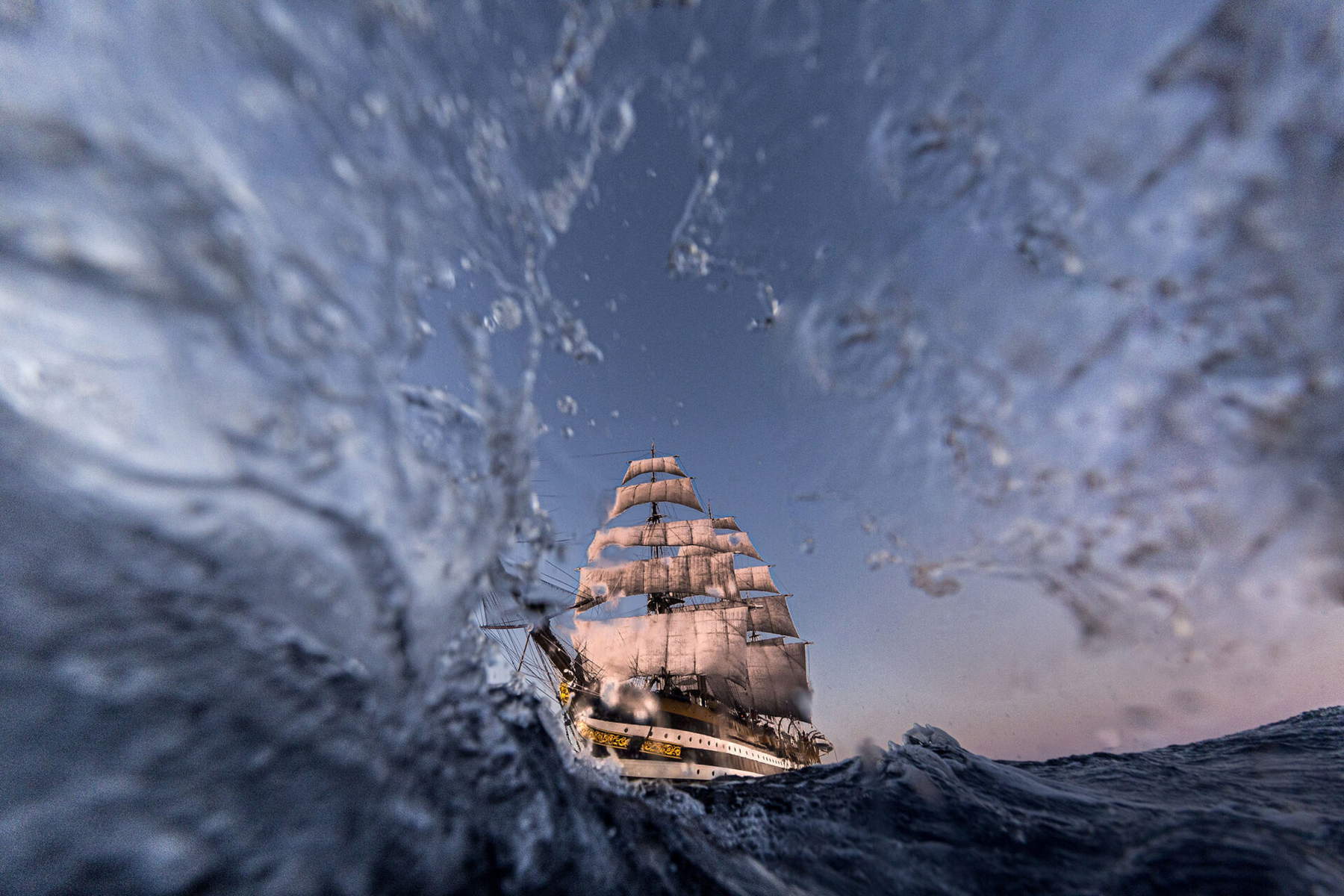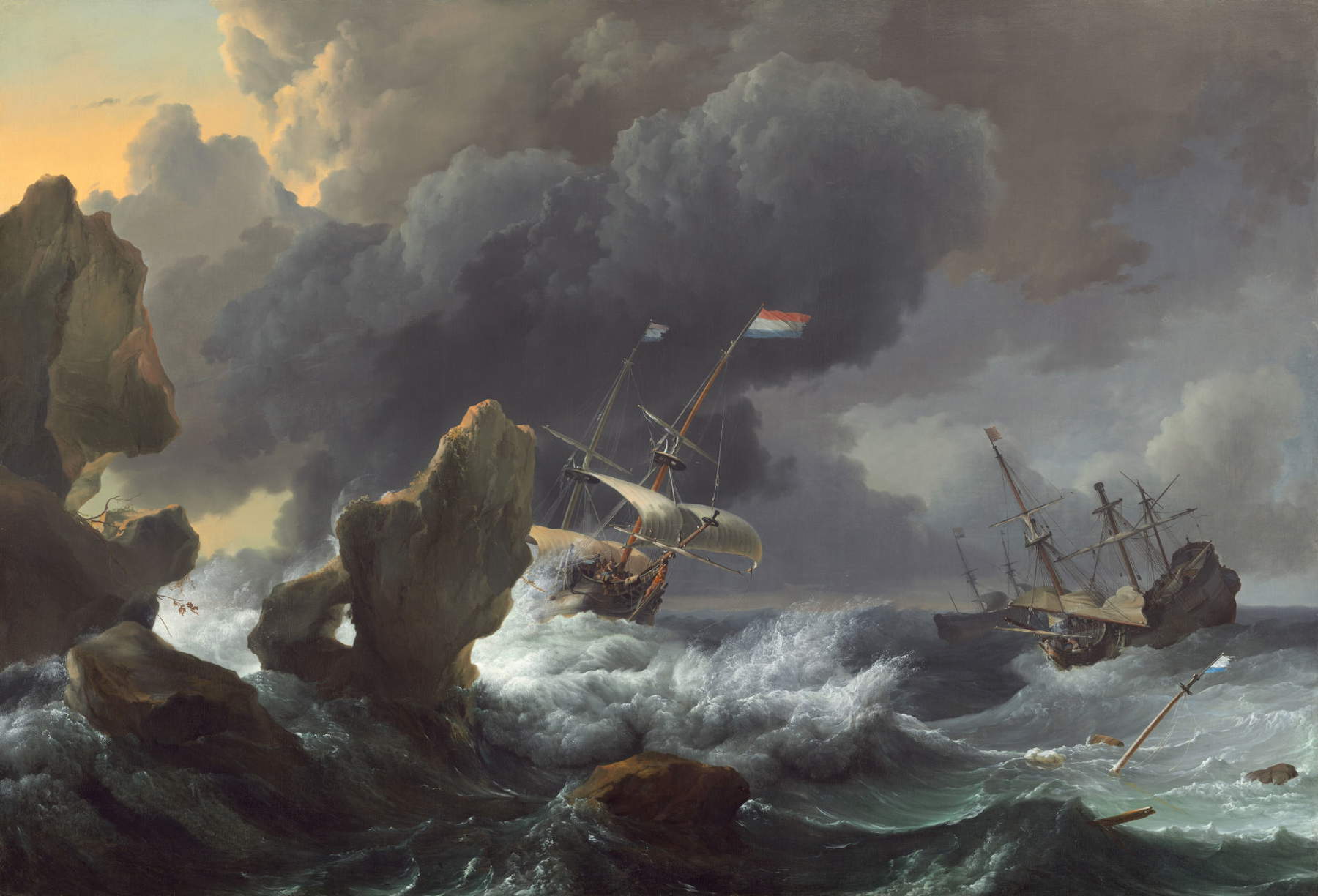The 2023-2025 World Tour (with docking in the port of Genoa) of Nave Scuola Amerigo Vespucci, a historic vessel of the Italian Navy, ended on June 10. Five continents, 30 countries, 35 ports and more than 46,000 nautical miles: the long voyage of the sailing ship, which began on July 1, 2023, was documented by photojournalist Massimo Sestini (Prato, 1963), a Tuscan photographer with an unmistakable style, who through the series of shots, recounted the stops, activities, training of students, diplomatic missions, but above all the promotion of Made inItaly in the world, a fundamental aspect of the sailing ship’s journey. Winner of the World Press Photo Award in 2015, over the years Sestini has documented Italy through the lenses of major international newspapers, including The Guardian, L’Espresso, Die Zeit, and National Geographic.
From the Capaci massacre to the Costa Concordia shipwreck, from John Paul II’s funeral to migrants’ journeys, Sestini has chronicled crucial events with a gaze that is both technical and poetic. His stylistic signature links technical virtuosity, operational audacity and a deeply personal vision: anticipating the use of drones, he has established himself as a pioneer of aerial and acrobatic photography. Indeed, Massimo Sestini is capable of flying above the scenes and diving, at the same time, into the abyss to give perspectives out of the ordinary.
Shots in the sailing ship attest to life on board, ceremonies in international ports, maneuvers under sail, and technical details of the ship. His approach enhances the symmetry of the masts, the natural light of the scene. To this must be added an even more refined look. What are we talking about? Extremely topical shots: Sestini’s photographs depict men and women who make up the crew caught in their daily activities, their uniforms and their looks. In this context, the photographer’s works enhance the beauty of the naval unit that, most likely, the whole world envies us.
The Amerigo Vespucci, the pride of Made in Italy, was launched in the Castellammare di Stabia shipyards in 1931. We refer to a 101-meter sailing ship that features 29 sails made of olona canvas, still sewn by hand. Memorable in this regard is the story dating back to 1962, when in the Mediterranean the aircraft carrier USS Independence crossed paths with theAmerigo Vespucci. When asked for identification, “Are you the Amerigo Vespucci sailing ship of the Italian Navy?”, Captain Massimiliano Siragusa replied in the affirmative. At that point the Americans replied “After 60 years you’re still the most beautiful ship in the world.”
Well, through his photographs, Sestini still continues to uphold the same concept of beauty with an approach that blends aesthetic research with powerful storytelling. The documentation of the Vespucci 2023-2025 tour is thus part in a photographic production that runs through different contexts: political events, humanitarian crises, international reportage. The photographer had previously taken photographs of the ship in specific contexts, such as the Barcolana sailing regatta, a landmark event for Italian and international boating. On that occasion, some of his images helped to spread the figure of the Vespucci beyond the strictly military sphere and bring her closer to the general public. It is precisely here that Sestini’s talent lies: in his ability to capture the strength of the ship and to evoke, through the image, all the suggestion of seascapes. This kind of sensitivity establishes him as an author capable of narrating the sea in all its nuances.
“Having the good fortune to photograph the Vespucci ship’s world tour is the most extraordinary experience in my professional career,” said the photographer. In the case of the Vespucci’s tour, Sestini’s documentation focused on the ship’s multifunctional role. His work is also distinguished by the use of unconventional perspectives, skillful management of natural light, and dynamic composition, suitable for giving the audience a completely different optical point of view. In this case, zenithal vision becomes a narrative tool. It reveals the hidden order in complexity and pays homage to the connection between the machine and the sea. Several shots, some of them closer, linger instead on faces, hands, uniforms, details of sails and shipboard instruments and return a human and concrete dimension to the tale of the voyage around the world.

Of strong impact is the shot that depicts the ship, sailing on a golden sea, probably at sunset. The image is dominated by a very strong contrast between the blackness of the sailing ship and the surface of the sea, which reflects the sunlight as a metallic, warm, rippling expanse. What is Sestini trying to do in this case? He captures the vessel through a sense of solemnity and majesty that recalls theepic of seafaring. The choice of backlighting therefore shapes the scene into a pictorial vision. Same narrative tension is found in another, equally powerful shot, where the Vespucci emerges among the restless waves, seen from the water level.
Well, here the camera is almost swallowed by the sea. Sestini therefore transforms the hostility of the sea into an expressive lens and accentuates the drama of the gaze. All this gives the ship a legendary aura. Here, too, the photograph becomes a visual tale that evokes a narrative through extreme but measured use of perspective and light. Especially in the construction of the single shot, Sestini’s style recalls suggestions that belong to the great painting of the past. The image is ideally linked with the stormy seas and lights of the RomanticWilliam Turner (Covent Garden, 1775 - Chelsea, 1851), with the mystical intensity of the 1850s marine scene Ship on Stormy Seas by Ivan Aivazovsky (Phaeodosia, 1817 - 1900), or again with the compositions of Claude Joseph Vernet (Avignon, 1714 - Paris, 1789), we can recall, for example, Ships in Distress off a Rocky Coast of 1667, and Ludolf Bakhuizen (Emden, 1631 - Amsterdam, 1708), masters in depicting the encounter between human frailty and the vastness of the natural elements.


In his itinerary, the photographer also investigates the broader meaning of sea travel as a collective practice and an opportunity for cross-cultural encounters. The photographs recount its present activity with a gaze that values the past and observes the future. At different stages of the project, Sestini also shared many of the shots through his own social channels, expanding the dissemination and impact of his work.
“At the head of the mast during the round-the-world voyage of the Navy’s ship Amerigo Vespucci,” he announced under a shot posted on Instagram. Also emblematic are the posts (images and videos) published on the occasion of theVespucci’s arrival in Venice, the Emirates, or again in Trieste. "The#AmerigoVespucci arrives in #Trieste bringing with it stories of distant seas and the extraordinary work of the Great Crew. Salute to the most beautiful ship in the world," he writes in another post. Sestini’s is thus a narrative that keeps the audience’s attention constantly alive. His is a contribution that accompanies the seafaring enterprise without emphasis, but with the knowledge that every voyage produces a trace. And every trace, if carefully recorded, can become history.
 |
| The most beautiful in the world: the Amerigo Vespucci in the shots of photojournalist Massimo Sestini |
Warning: the translation into English of the original Italian article was created using automatic tools. We undertake to review all articles, but we do not guarantee the total absence of inaccuracies in the translation due to the program. You can find the original by clicking on the ITA button. If you find any mistake,please contact us.